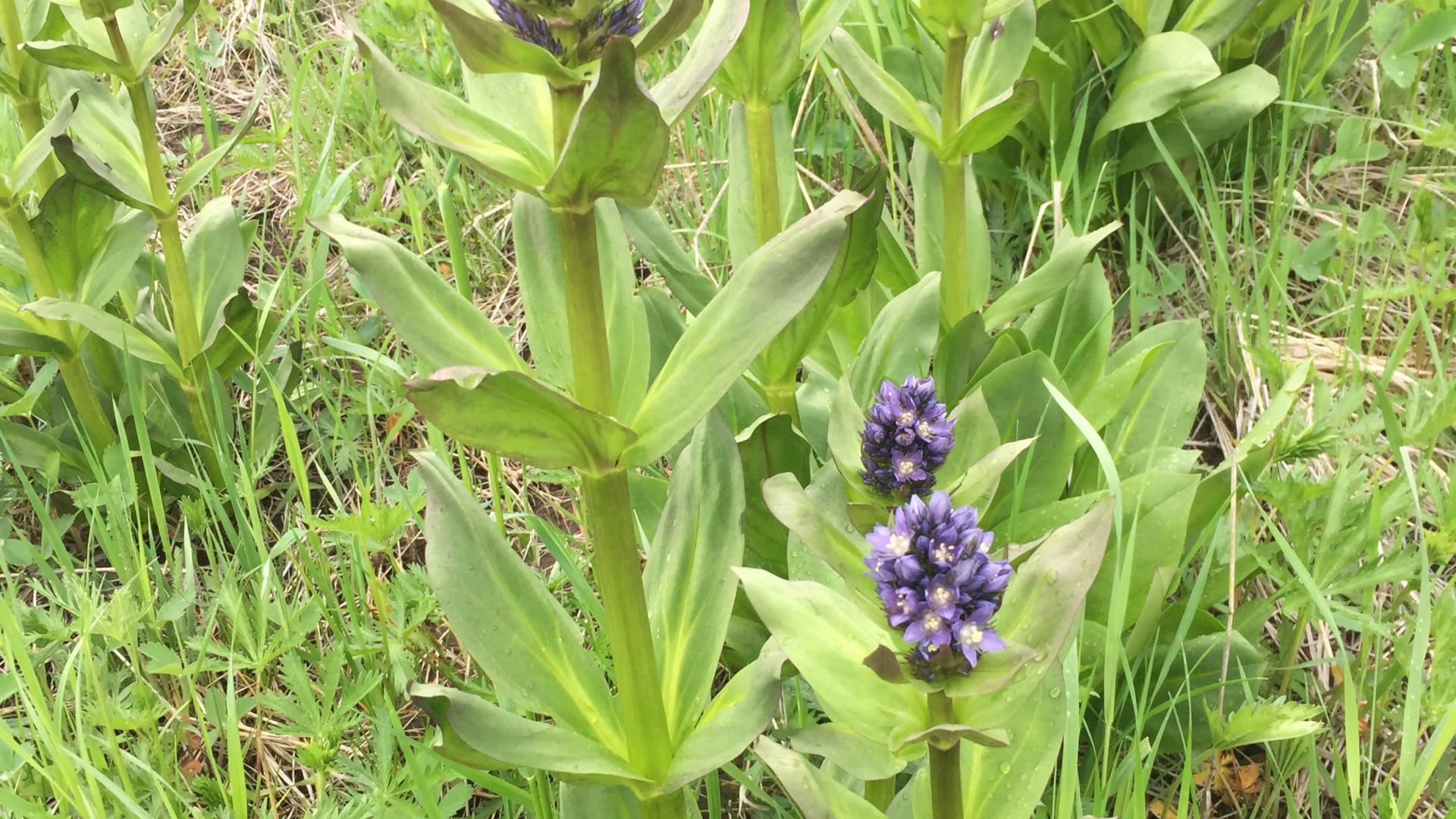
- Body
Maintaining a healthy forage resource is vital to the ecological and economic sustainability of rangelands. The goal of forage management is to find an acceptable balance between forage yield and forage quality, while allowing the forage plants to stay healthy and vigorous following grazing or harvest. Yield and quality cannot be maximized simultaneously, and different management strategies are required to optimize these two factors separately. Forage yield (tons per acre, animal unit months) and plant persistence are usually maximized when plants are harvested at mature stages of growth. Forage quality, however, is usually highest when plants are harvested in a young, leafy stage of growth, at which point forage will be high in protein and digestibility and low in fiber. The challenge is to manage both forages and livestock to optimize forage yield, quality, and persistence as well as animal performance, health, and reproductive capabilities.
Learn about rangeland plant terminology:
Learn more about Key Rangelands Plants:
- NRCS Plants database
- Fire Effects Information System
- Blue Collar Plants with a short tutorial about how to search the Blue Collar Plant database
Types of Plants
- Grasses are plants with jointed stems. The stems are normally hollow between the joints (node). Leaves are in two rows on the stem. Veins in the leaves are parallel. Grasses are generally the most important and abundant kind of range plant for grazing animals.
- Forbs are broad-leaved plants with aboveground growth that dies back each year. Most forbs have net veins in the leaves, but a few have parallel veins. Broadleaf weeds and wild flowers are examples of forbs.
- Grass-like plants look like grasses but have solid, though not hollow, stems without joints. Stems may be triangular. Veins in the leaves are parallel. Sedges and rushes are in this group of plants.
- Trees and shrubs are plants with persistent woody stems that live from one year to the next. Shrubs have stems that branch from near the base, while trees have a definite trunk and are usually bigger than shrubs. Some plants can take on a shrub or tree growth form, depending on environmental conditions.
- Weed is a designation that can be given to any plant that grows where it is not wanted or interferes with the growth of desirable plants. The term "weed" is usually reserved for plants that have a persistent and aggressive growth habit.
Life Span of Range Plants
- Annual species complete their lifecycle (emerge, produce seed and die) in one growing season that lasts 4-6 months. Depending on the season of growth, there are two types of annuals:
- Winter annuals complete their lifecycle in the winter. Germination occurs in fall and small basal leaves persist during winter. Early the next year, the plant will grow and produce flowers and seeds in summer. Once the plant has produced seed it dies.
- Summer annuals complete their lifecycles in summer. Germination occurs in spring and grows throughout the summer. In late summer or early fall the plant will produce flowers and seeds and die.
- Biennial species live for two complete growing seasons. These species produce basal leaves (or a rosette) the first year. During the second year, the plant will produce a seed stalk (or a bolt). Flowering and seed dispersal occurs during the second year and once the plant has reproduced it will die.
- Perennial species live three or more years and each year the plant produces new plant parts (leaves, stems, etc.). Majority of rangeland vegetation are perennial species.
Season of Growth
- Cool-season species perform most of their growth while temperatures are relatively cool. At higher elevations (generally above 44 degrees North) majority of vegetation is cool-season because temperatures are cool during all of the growing season. These species are often less competitive when conditions are especially warm or dry. Cool-season plants at lower elevations generally have growth in the spring, produce see in late spring/early summer, and new growth occurs in the fall with sufficient moisture.
- Warm-season species perform most of their growth in late spring and summer and produce seeds in mid-summer and early fall. These species are more competitive in warm and dry environments.
Origin of Range Plants
- Native species are plants that originated, evolved, and are still present in a particular area.
- Introduced species are plants that were brought to a particular area from another region. Often times introduced species were intentionally introduced to a particular area to help meet rangeland needs (good forage value, erosion control, etc.). In some cases, introduced species were accidentally introduced to an area through contaminated crops or animals (or humans) unknowing depositing seed.